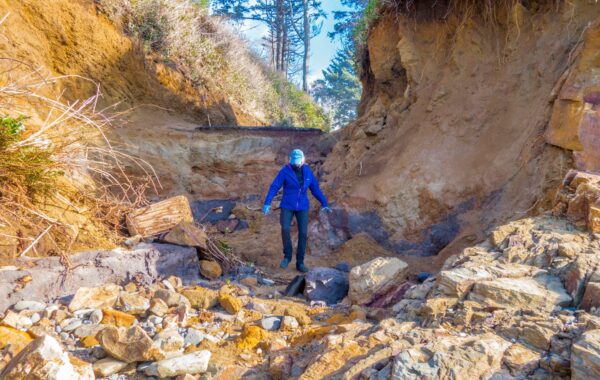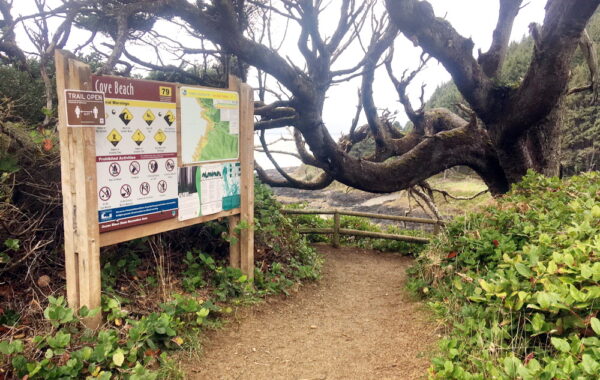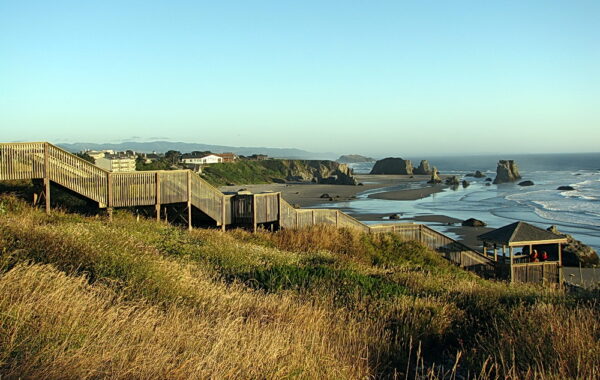Shoreline and Land management
We protect public access to Oregon’s shoreline

One of Oregon’s glories is its entirely public shoreline. The celebrated Beach Bill, passed in 1967, established that the shore up to the 16-foot contour—a surveyed line that is officially known as the “statutory vegetation line”—would be preserved as a public recreation zone. Many people are under the impression that public access to the shore is also guaranteed, but this is not the case. Preventing loss of access has required constant vigilance.
Oregon Shores began as a watchdog group for our public beaches, and that mission has always included conserving access. We have advocated for maintaining public access points to Oregon’s public shoreline for more than half a century. The issue is always lurking in the background when development is proposed—if construction blocks a path to the shore, we make sure that the developer creates a new one elsewhere. Landowners sometimes seek to have public rights-of-way heading up at the shore vacated; when this happens, we vigorously contest it. More commonly, property owners seek to disguise access points, such as by allowing vegetation to spread or parking an RV in the path to make it look like a driveway. With the help of members who call our attention to such abuses, we follow up with local governments and State Parks to assure that obstacles are removed.
Public access to the shore is an active topic at present. The Oregon Coastal Management Program (a part of the Department of Land Conservation and Development–DLCD) is in the midst of a study of public access to Oregon’s public shore. With more and more people visiting the coast, and many private owners seeking ways to exclude the public, this is an increasingly important issue if we are to maintain our tradition of a shoreline that belongs to the people.

Oregon Shores Shoreline and Land Manager Phillip Johnson serves on an informal advisory group to the Coastal Management Program, the Coastal Access Advisory Team (CAAT), which is exploring the issue and generating ideas for possible regulations that would better protect public access. The CAAT helped to craft a new section on public access for the coastal planner’s handbook provided by DLCD, and considered proposals for new regulations or legislation that may be needed to assure that access is gained, not lost. Oregon Shores is advocating strongly for a good balance between making some sites more accessible, especially to those with physical challenges, while keeping others minimally developed to limit the impact of visitors. We are also advocating for careful sensitivity to possible impacts to areas of cultural significance to Oregon’s Tribes. The CAAT’s recommendations have been completed, and are now being studied by DLCD.

